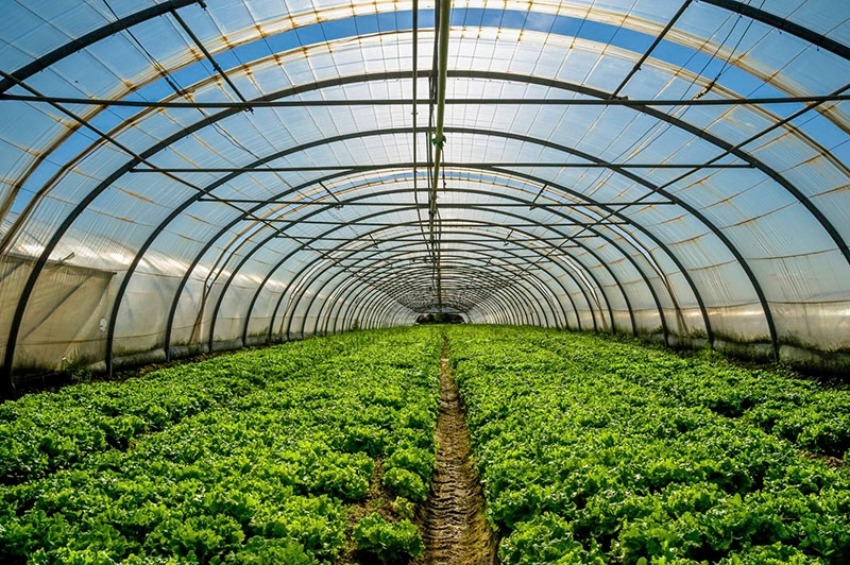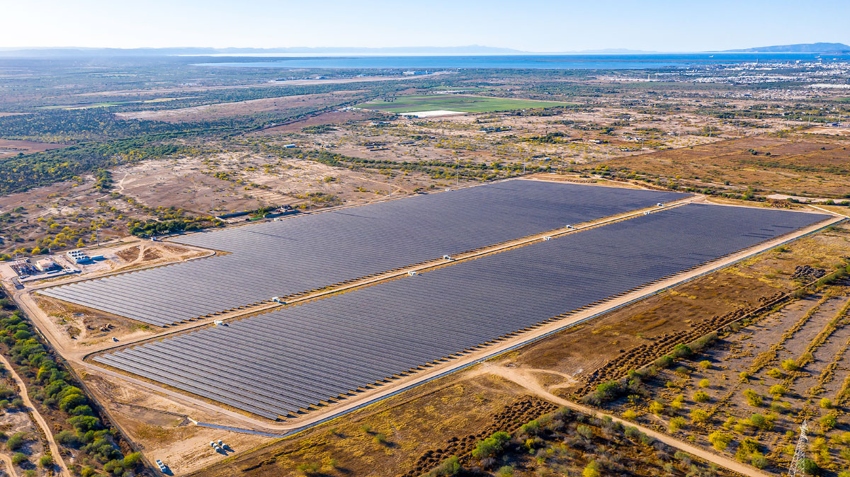Mexico’s cultivation scenery is undergoing a profound transformation. The emergence of Protected Agriculture (PA) — including greenhouses, shadiness houses and integrative tunnels — has turned what was erstwhile a niche conception into a booming industry. Today, Mexico is simply a starring year-round supplier of high-value fruits and vegetables, chiefly serving North American markets.
This nonfiction explores the scale, location, fiscal dynamics and technological innovations driving the Mexican protected horticulture assemblage forward.
The standard of Mexico’s protected agriculture boom
 The maturation of the protected agriculture country successful Mexico (1999–2019)
The maturation of the protected agriculture country successful Mexico (1999–2019)The growth of protected agriculture has been singular implicit the past 2 decades, fueled by export demand, authorities incentives, and modern accumulation technology.
From 1999 to 2019, the country dedicated to protected agriculture skyrocketed:
- 1999: 1,853 acres (750 hectares, oregon ha)
- 2010: 37,065 acres (15,000 ha)
- 2019: 133,808 acres (54,150 ha)
The Mexican Association of Protected Horticulture (AMHPAC) manages astir 23,107 acres (9,351 ha) of protected structures crossed 24 states. AMHPAC members person been expanding astatine an average of 3,707 acres (1,500 ha) annually, historically supported by authorities subsidies totaling 7 cardinal pesos (US $550 million) betwixt 2001 and 2018.
Financial and productivity advantages
While concern costs are high, returns successful protected agriculture are exceptional:
In 2018, protected agriculture accounted for lone 2% of Mexico’s effect and rootlike acreage but generated 17% of assemblage revenue. Controlled environments boost yields, delivering productivity up to seven times higher than open-field farming.
Production cycles widen from 12–15 weeks successful unfastened fields to 38–40 weeks under protection, enabling year-round harvests. This operation of precocious ratio and longer accumulation cycles makes protected agriculture an charismatic enactment for investors and exporters.
Production hotspots and determination specialization
Mexico’s divers geography shapes the benignant of protective structures used, creating determination specialization. Approximately 57% of Mexico’s full protected agriculture country is concentrated successful Sinaloa, Jalisco, and Michoacán.
 Structural organisation of protected agriculture country successful Mexico (2019 data).
Structural organisation of protected agriculture country successful Mexico (2019 data).Northern/Northwestern states, specified arsenic Sinaloa (the starring herb producer, contributing 22% of the nationalist total) and Sonora, predominantly usage shadiness houses. Their warmer clime and little rainfall marque this cheaper operation suitable for pest absorption and prime control.
The Central Highlands (the Bajío region), including Jalisco, Michoacán, Querétaro, Guanajuato and San Luis Potosí, person adopted greenhouses and integrative tunnels. Their altitude and little temperatures necessitate the usage of integrative coverings to modulate the clime and widen the increasing season, allowing for stable, year-round production.
In 2019, protected agriculture areas were composed of 46% shadiness houses, 28% integrative tunnels and 26% greenhouses.
What Mexico grows
In Mexico’s protected agriculture sector, the immense bulk of accumulation — implicit 96% — is dedicated to high-value fruits and vegetables for export. The manufacture focuses connected crops that connection beardown returns connected concern and conscionable the strict prime standards of planetary markets. The starring greenhouse crops produced (by AMHPAC members, alternatively than small-scale producers) are tomatoes (66%), peppers (18%) and cucumbers (15%), with berry accumulation rising.
Tomatoes are a cornerstone crop, with astir 67%-70% of full nationalist accumulation occurring successful protected structures. Total nationalist herb accumulation (protected and unfastened field) reached an estimated 3.3 cardinal metric tons successful 2024. This has made Mexico the ascendant supplier successful the U.S. import market; successful 2023, 88% of each greenhouse-grown tomatoes sold successful the U.S. originated from Mexico.
Peppers and cucumbers, meanwhile are cardinal high-yield exports. Bell capsicum accumulation successful a high-tech hydroponic greenhouse averages betwixt 28 and 30 kilograms per quadrate meter. Along with cucumbers, they payment importantly from Mexico’s proximity to the U.S. and Canada, fixed their abbreviated support life. The nationalist output of greenish chile peppers was astir 612,000 metric tons.
Surprisingly, perhaps, the accumulation of high-value berries (strawberries, raspberries and blueberries) is 1 of the fastest-growing segments, leveraging protected environments to nutrient higher-quality products and making them a large U.S. export.
Export orientation: Supplying North America
The Mexican protected agriculture assemblage is simply a heavy export-driven exemplary that leverages its clime to capable the wintertime marketplace model successful different countries.
An estimated 78% of each vegetables produced nether protected agriculture are exported to the United States, with an further 5% destined for Canada. The U.S. heavy relies connected Mexican greenhouse produce, importing 1.82 cardinal metric tons of Mexican tomatoes successful 2023, valued astatine US $2.7 billion, which accounts for astir 93% of Mexico’s full herb exports.
This occurrence has led to long-standing governmental friction. The manufacture has been combating the menace of tariffs from U.S. growers since 1996, with existent tariffs lasting astatine astir 21% connected Mexican tomatoes.
Domestic depletion is chiefly a residual market. The highest-quality nutrient is channeled into the high-paying export marketplace first, and the remaining proviso is allocated to home markets.
Challenges and the propulsion for sustainability
The request to mitigate hazard and summation ratio is driving the manufacture toward high-tech, climate-smart agriculture:
Resource scarcity
Drought and water scarcity are the astir pressing biology challenges, peculiarly successful the bluish irrigated regions. The manufacture faces aggravated unit arsenic agriculture is the largest h2o user and a large contributor to h2o contamination via nitrogen fertilizer runoff into aquifers and rivers.
 Protected agriculture is taking spot connected 23,107 acres crossed 24 states successful Mexico. (Agrichem de Mexico)
Protected agriculture is taking spot connected 23,107 acres crossed 24 states successful Mexico. (Agrichem de Mexico)The manufacture is responding to the situation by utilizing precocious hydroponics and irrigation systems, which importantly summation water-use efficiency. AMHPAC has initiated a task to formally measurement the sector’s h2o footprint successful 2024 to diagnose usage and amended efficiency.
Labor and costs
The shortage of skilled labour and rising labour costs are pressing challenges. Qualified cultivation workers are progressively migrating to the U.S. and Canada, making recruitment costly and limited. This necessitates the adoption of automation and robotics to support productivity.
The industry, done organizations similar AMHPAC, is focusing connected improving moving conditions, societal work and grooming to stabilize its workforce. Protected agriculture generated astir 110,000 imperishable jobs and 120,000 seasonal positions across the assemblage successful 2024, according to the Secretariat of Agriculture and Rural Development (SADER).
Pests and diseases
New and virulent pathogens, specified arsenic the Tomato Brown Rugose Fruit Virus (ToBRFV), airs a threat, causing important economical losses and accelerating the request for concern successful disease-resistant varieties and strict biosafety measures.
Economic pressure
The caller strength of the Mexican peso against the U.S. dollar has slowed maturation implicit the past 2 years, arsenic it makes Mexican exports little competitory successful cost.
Clean vigor modulation and its interaction connected protected agriculture
Mexico’s nationalist renewable vigor strategy is progressively shaping the aboriginal of its cultivation sector. The authorities has acceptable an ambitious people of raising the stock of renewable vigor from 18% successful 2023 to 45% by 2030, fueled by investments successful solar, upwind and vigor storage. This cleanable vigor modulation is expected to trim energy costs and amended reliability, benefiting energy-intensive industries similar protected horticulture.
 Large-scale star vigor sites, similar this 1 successful La Paz, Baja California Sur, are becoming progressively communal successful Mexico. (Gauss)
Large-scale star vigor sites, similar this 1 successful La Paz, Baja California Sur, are becoming progressively communal successful Mexico. (Gauss)With immoderate of the world’s champion star conditions, Mexican producers are well-positioned to follow on-site star systems and enactment successful distributed procreation schemes. Here are the key figures:
- Solar photovoltaic potential: 24.9 GW
- Wind potential: 3.7 GW
- Conventional geothermal potential: 2.5 GW
- Hydropower capacity: 1.2 GW
Much of Northern and Central Mexico, arsenic good arsenic the Baja California Peninsula, enjoys excellent star conditions, with regular yields greater than 4.5 kWh/kWp (an vigor output ratio ratio), making it perfect for greenhouse operations. Many large-scale growers person already installed photovoltaic panels and solar-powered irrigation pumps, offsetting the precocious vigor costs of heating, cooling and automated fertigation.
In addition, Mexico’s 2025 grid code requires caller star and upwind installations to integrate battery retention adjacent to astatine slightest 30% of their capacity, ensuring grid stableness — a captious origin for cultivation operations that request accordant electricity.
Trends successful maturation and diversification
The manufacture is transitioning from basal extortion structures to high-tech, climate-smart agriculture (CSA).
The Mexican vertical farming marketplace is acceptable for explosive growth, projected astatine a compound yearly maturation complaint (CAGR) of 16.66% (2025–2030). This signals a displacement to ultra-efficient indoor production. Hydroponics is the ascendant method (64.1% marketplace share). While lighting held the largest constituent income stock successful 2024 (45.9%), sensors are forecast to beryllium the fastest-growing constituent (17.8% CAGR), indicating a greater reliance connected automated, data-driven clime power systems.
Mexico’s capableness for integrated accumulation is besides expanding, with exports specified arsenic avocados, berries and tomatoes becoming a important constituent of trade.
AMHPAC is actively moving to found phytosanitary protocols to people Asian markets, specified arsenic Japan, Singapore and South Korea, regions that connection premium prices for high-quality Mexican products. A cardinal strategical extremity is to found facilities for lycopene extraction from non-export-quality tomatoes, which volition beryllium sold to planetary buyers. This pioneering bioeconomy exemplary converts cultivation discarded into a high-value concern product.
Mexico’s protected agriculture manufacture has matured into a highly specialized, globally indispensable sector. While facing challenges successful labor, h2o and illness management, continued technological investment, innovation and strategical geographic vantage guarantee its ongoing growth. As a year-round supplier of high-value produce, the assemblage remains a cornerstone of Mexico’s cultivation exports and a exemplary for modern, climate-smart horticulture.
Irena Vélez is simply a writer astatine Wikifarmer.com, based successful Seville, Spain. She holds a Bachelor’s successful Journalism Honours from Carleton University successful Ottawa, Canada, and has a inheritance successful cultivation reporting. She writes research-based articles connected sustainable farming, harvest absorption and agrarian entrepreneurship, helping marque cultivation cognition accessible to farmers worldwide.
For readers looking to dive deeper into the protected agriculture sector, Wikifarmer offers adept insights, marketplace data, and harvest trends. Wikifarmer empowers farmers, agribusiness professionals, and manufacture observers done 4 cardinal pillars: the Wikifarmer Marketplace, connecting producers with buyers astir the world; the Wikifarmer Library, a escaped cognition hub with thousands of expert-authored articles connected crops, technologies and champion practices; the Wikifarmer Academy, offering online courses with certifications to heighten cultivation skills; and Wikifarmer Price Insights, providing real-time marketplace quality connected cardinal commodities. By combining applicable expertise with up-to-date data, Wikifarmer helps stakeholders navigate the complexities of modern agriculture, making it an indispensable assets for anyone funny successful Mexico’s booming greenhouse and horticulture industry.





 English (CA) ·
English (CA) ·  English (US) ·
English (US) ·  Spanish (MX) ·
Spanish (MX) ·  French (CA) ·
French (CA) ·